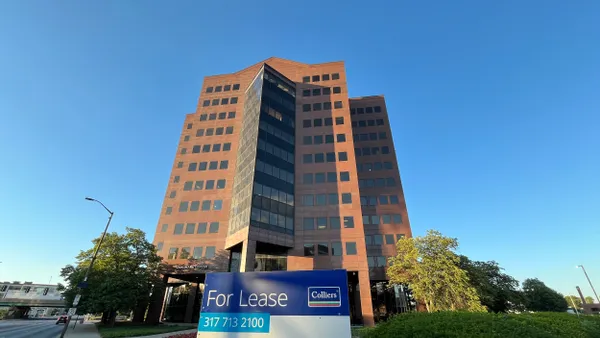Cushman & Wakefield grew revenue 7% year over year, led by strength in its leasing, capital markets and valuation segments in its Americas business, it reported in its second quarter earnings.
The firm’s Americas services segment revenue stayed steady, growing 1% year over year to just under $610 million, with performance driven by improvements in facilities services, facilities management and project management, the company said in its earning presentation. The segment made up 51% of the region’s fee revenue during the second quarter.
Globally, the services segment saw 6% year over year organic growth, with Cushman & Wakefield winning new business and driving incremental growth within its portfolio of existing customers, CEO Michelle MacKay said on the company’s Aug. 5 earnings call. She noted that an intensified focus on client retention has resulted in a 96% retention rate in its Global Occupier Services over the past year.
“It’s a notable improvement,” MacKay said. “It’s given us some tools to apply across the services business in general. People have believed historically that [retention] even in the low 90s was compelling, but we’re providing that we can really create a much stickier environment for our clients and services.”
Leasing revenue grew 9% year over year in the second quarter, with strong performance across all asset classes, particularly office and industrial, despite the shifting tariff climate, according to MacKay.
“The macro uncertainty has now been a constant throughout the year, and our business has performed really well under it, because people continue to make decisions,” MacKay said. “Leaders of businesses have been tuned into the fact that they have to be able to make decisions through the noise. So how does that impact leasing? Well, they're still striking leasing deals.”
“Our leasing business continues to run on all cylinders. We see this acutely in our multi-market occupier group, where mandate complexity is increasing, driving average contract revenue about 45% in the first half of this year,” MacKay said.
Responding to a question about headlines that markets are “running out of recovery,” pushing occupiers toward sub-trophy space, MacKay confirmed the trend and said that it has begun to expand outside New York City to other cities that include Boston, Dallas, Miami and Houston.
“Non-gateway markets like Phoenix, San Diego and Toronto were also strong for us, so the regional strength is broadening as well,” MacKay said. “So the regional strength is broadening as well. And yes, you’re seeing the move from what you would consider a [Class A] space into what you might consider an A-minus space.”
MacKay noted that industrial markets are showing strength for the firm, despite cooling from pandemic highs, with revenues growing 8% year over year in the Americas.
“While the industrial market cooled from that pandemic-fueled boom, it's still growing,” MacKay said. “In Q2 alone, the sector recorded almost 30 million square feet of net absorption, so although the pace has moderated a bit, industrial users are still expanding and taking space.”
Industrial rents have soared since the pandemic, MacKay said. They’re up roughly 50% in the U.S., and higher in some markets including Philadelphia, the Inland Empire and throughout New Jersey.












